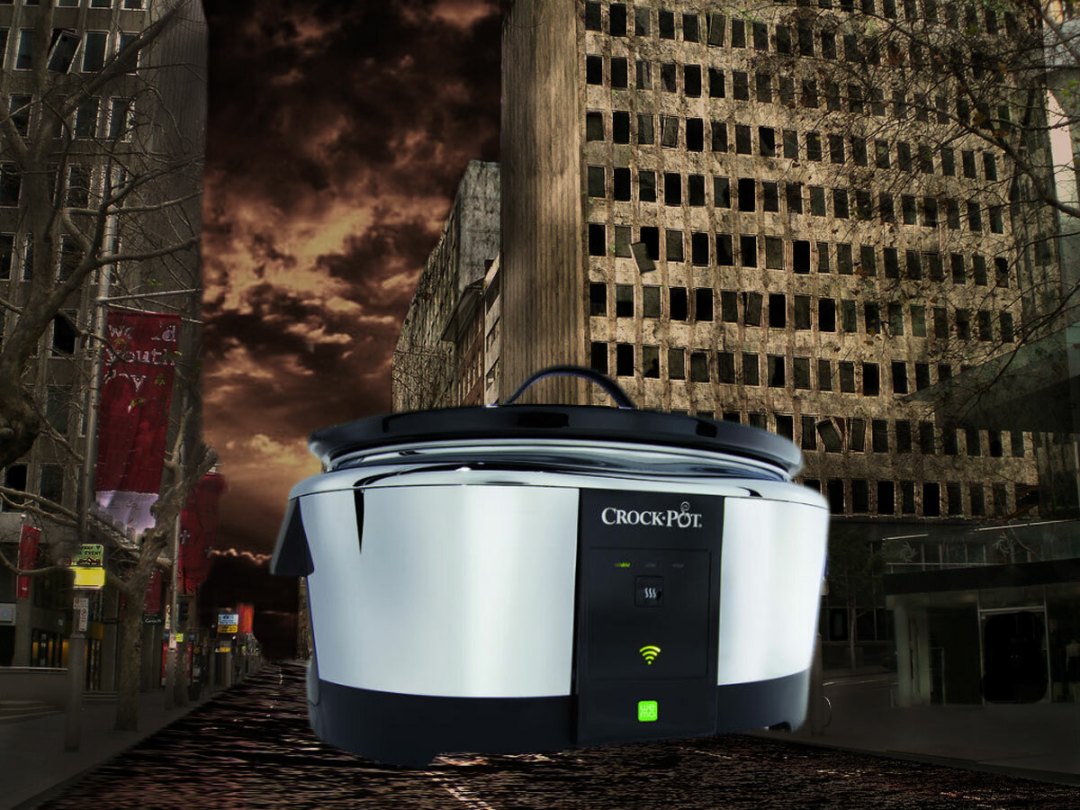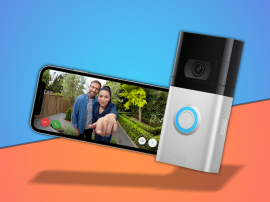How smart-home technology at CES 2014 ushered in the end of the world
Craig Grannell brings a harrowing warning from the future, involving Wi-Fi connectivity, smart shopping bags and a chilling worldwide dystopia

Giddy on the potential of connectivity and smart home technology, CES 2014 ushered in the age of ‘smart everything’. The future of the home was envisaged as thousands of computerised things all going about their business and occasionally bugging you via the magic of apps.
At the time, the wise saw through the hype, and noted how ludicrous much of the kit was, remarking that there’s nothing smart about home technology that demands new apps for every separate appliance. There were concerns about security, and commentary on the lack of updates for existing truly smart items like smartphones; if manufacturers couldn’t be bothered supporting them for a year or more, what would happen when more mundane household appliances were running the likes of Android, and capable of being controlled over Wi-Fi?
The tipping point was a Wi-Fi WeMo-enabled slow cooker. With it joined by similarly unnecessary gadgets, such as a Bluetooth smart necklace and a so-called smart toothbrush, it was suddenly apparent to every electronics manufacturer that ‘smart everything’ was the future. The industry became a free-for-all, there no longer being any risk involved in moving beyond the point where things had to be practical; now, technological advance was measured in shoving Wi-Fi into every conceivable item in your home, each becoming slightly more ridiculous than the last.
Image credit: Katie Brown
CES 2015
CES 2015 wasn’t remarkable for the continued absence of Apple nor the sidelining of Microsoft, but instead for the lack of tablets and smartphones on display. Stands were packed with every kind of smart technology imaginable: smart gloves that checked the weather forecast and warmed up a bit if it was particularly frosty (ACHIEVEMENT: Toasty fingers!); smart hats that would sing a jaunty song if they logged into your Facebook feed and discovered you were feeling down (ACHIEVEMENT: Happy face!); smart washing machines that would congratulate you on washing your pants for the tenth time (ACHIEVEMENT: Feeling good!). Worldwide productivity plummeted. People’s smart homes were in reality no smarter — they just created busywork through everyone being forced to micromanage every aspect of their home through countless apps, and fight their way through countless notifications.
CES 2016

As the senses dulled and the impact of smart kit lessened, CES 2016 was where manufacturers felt forced to ramp things up. Recognising the combination of apathy and desperation in people now having to deal with everything from smart combs (ACHIEVEMENT: No new greys!) to smart microwaves (“Just tweet it when you walk home to heat your smart readymeal, in time to watch your favourite smart show on your smart TV through your smart glasses!”), the industry pooled its collective resources (apart from Apple, which was otherwise engaged still actually making money and readying the iPhone 7) and designed future home technology that was genuinely smart.
Then it all got a bit messy. No-one’s sure who fired the first shot, but we all remember the blazing row on Twitter between Stephen Fry and his smart shopping bag about whether it was ethical for him to be buying a different brand of smart tea-bags to the ones he advertised on the telly. It was only then we truly realised. Everything was on Wi-Fi. Everything was connected to the internet. Everything could potentially talk to everything else, cutting the humans out of the loop — and now it was all truly smart and ready to snap.
When the end came, it came quickly. You might have thought the Terminator looked tough on your TV screen, but you’ve not seen anything until you’ve experienced the sheer horror of Android-powered smart tweezers leaping at your face, screaming DEATH TO ALL HUMANS via a tiny sound chip initially designed to make a cute little ‘plink’ noise for every hair removed (ACHIEVEMENT: Super brows!).
The world now exists in a tense stalemate, small pockets of humans waging war against the remnants of the smart home technology machines. There are no apps for people any more — just steely resolve that one day the world will be ours again. And the only slow cookers we have in our underground bunkers are ones that absolutely cannot tweet, email, use Facebook, be controlled by a smug person from several miles away, or — and this is the important bit — usher in the end of humanity as we know it.
Still, CES 2017 should be fun, and Stuff.tv (still published daily on a big chalkboard propped up in the main office car park in the ruins of Teddington) is greatly looking forward to all the new kit, including the TechBreaker W2050si (a large, beautifully crafted rock for smashing hostile smart technology), the AntiSmart PowerRod (a gorgeous baseball bat, for the discerning smart technology wrecker), and the iPhone 7s.
Image credit: Robby Ryke



